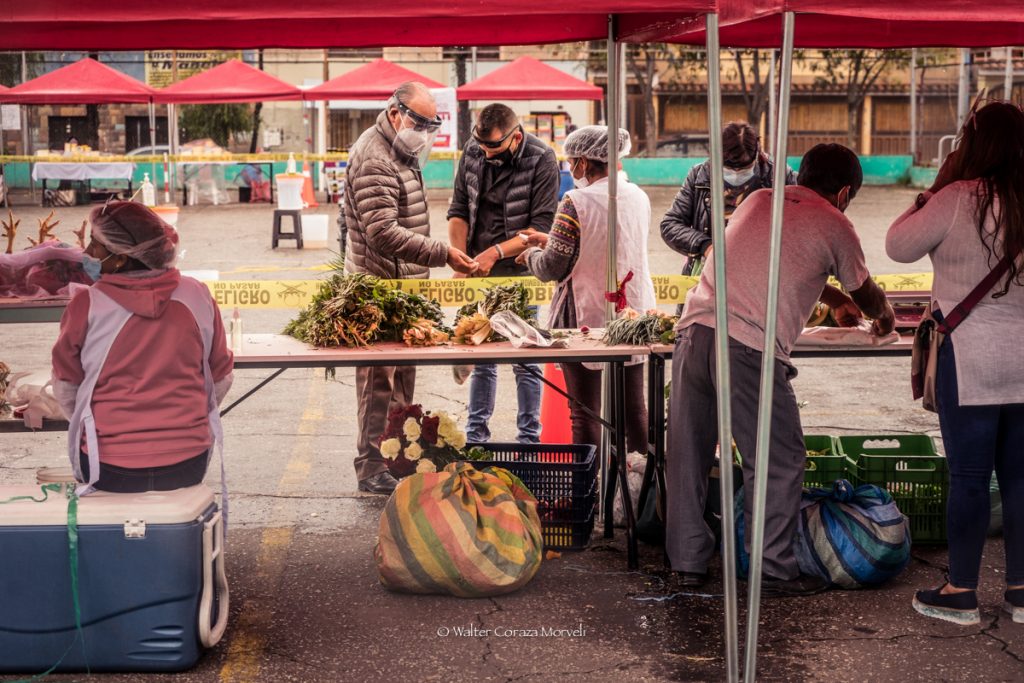Live the Experience of Shopping in the Markets of your Neighborhood

Our markets have become the reflection of daily life in the times of the pandemic. The large crowds that used appear in traditional markets, supermarkets and supply stores, make people feel despair of people. Nobody wants to contract this virus that has been taken so many lives. For that reason, Cusco families seek not to avoid lacking basic products for daily consumption in their homes.
I remember with nostalgia what it was like before this pandemic to walk through the interiors and surroundings of our traditional markets: San Pedro, San Blas, Cascaparo, Rosaspata, and others. There is nothing like looking in them to discover pleasures, objects and customs. Vendors (caseras)—dressed in their different colored aprons, covering their heads with hats and caps of different models and colors—waited for you with patience and good humor to offer you their products and envelop you with their experiences and prices.

Now, not so many people go to them out of fear of contracting the virus and exposing our loved ones to it. Everyone goes with the necessary protection measures: masks, face shields, and alcohol to disinfect hands, bills and coins. The keep one meter away from each other. At the doors, there is always running water along with liquid soap for the use of customers and passersby.
For this reason, the district and provincial municipalities in our region are promoting “markets in your neighborhood or in your locality”. They seek to reorganize how people shop and encourage direct purchase from producers, especially those from different rural communities. They also seek to avoid crowds that could become sources of infection.
In the northeast area of the city of Cusco, where I live and transit daily, you can see the “markets in your neighborhood”. From Monday to Saturday. the cameras come to different neighborhoods; one day in each one.

They rotate through the different established locations: sports fields, squares, streets, or communal halls. They are present from 7 in the morning to 12 noon and offer their different staple products: vegetables, legumes, fruits, meats, condiments, and even clothes.

For the neighbors, it is closer and easier to find food. There are times where you meet a causer or casera who you know and who is selling something. She or he calls you with confidence, affection, and kindness to approach their space to offer you their products. Many vendors are known for being people who work in traditional markets.
The vendors receive the support of the various municipalities for the transfer of their products. They arrive in trucks. They settle in the designated spaces, and they offer us quality products at a fair price. All this benefits the farmers, consumers, and sellers who seek to generate income to have a better quality of life.
The entrances and exits are always marked with safety rings in order to maintain social distancing. Each vendor appears with their masks, gloves, and face guards on. They have their disinfectant or alcohol gel for the customers’ hands.
Since eating is a sacred pleasure, we have to be aware when shopping to enjoy and share with our families and loved ones.
This morning’s market was held in Urb. Manuel Prado, the weekly fair of the ¨Chacra a la olla¨ which is also part of the “Markets in your neighborhood” fair.






